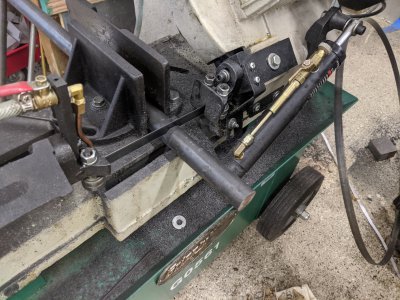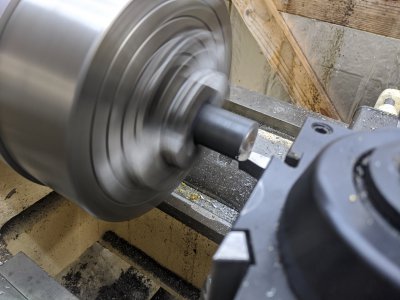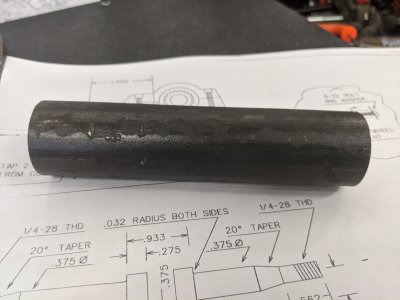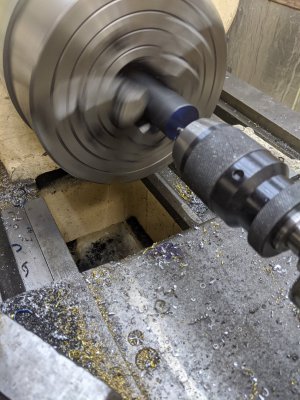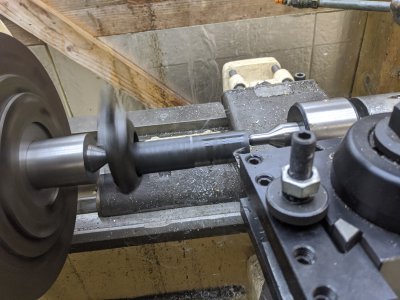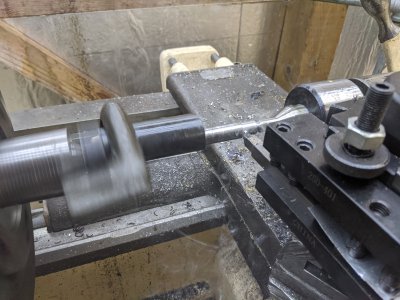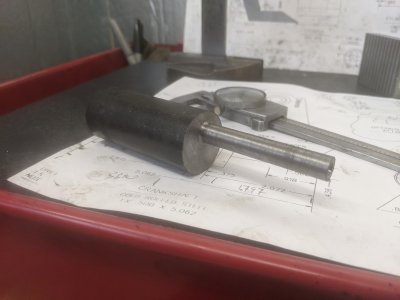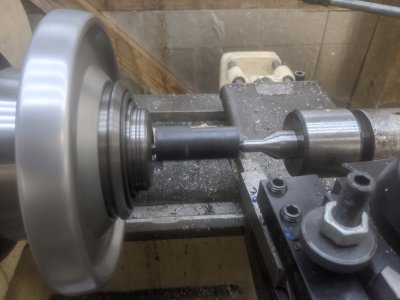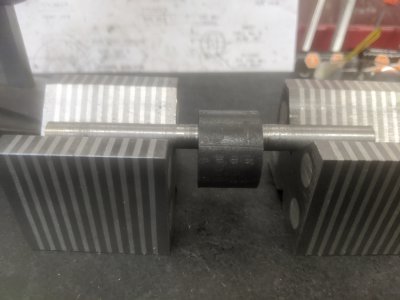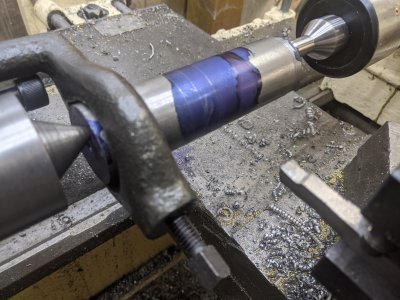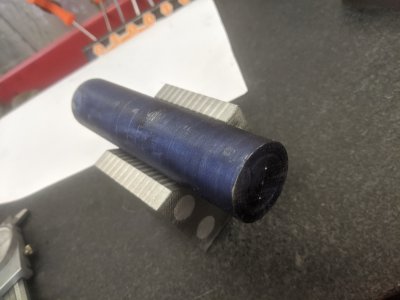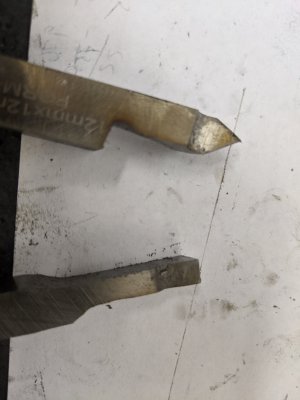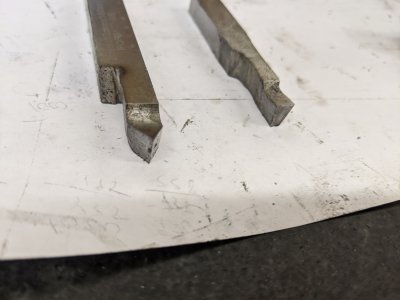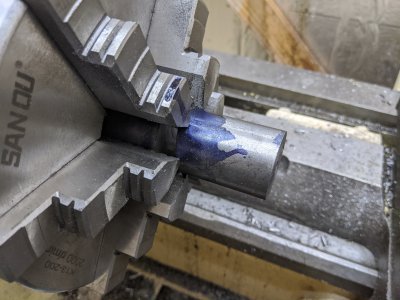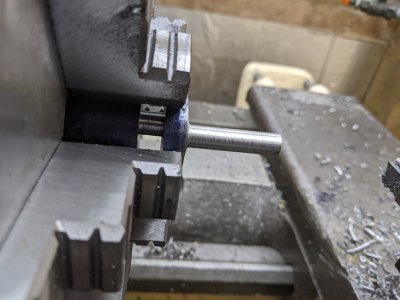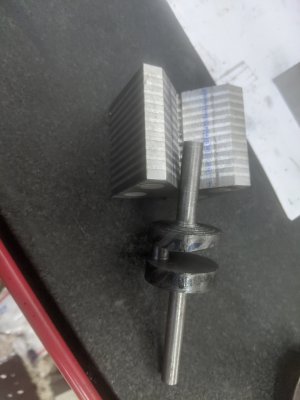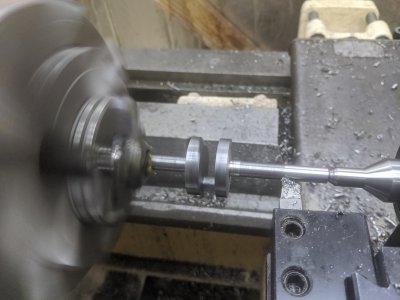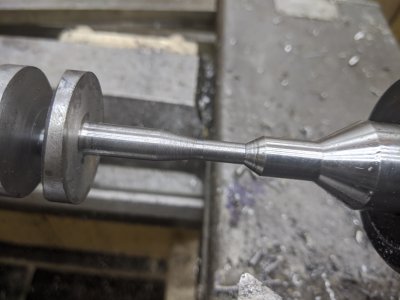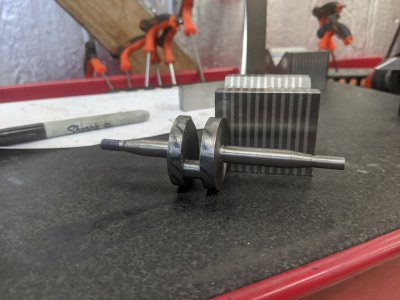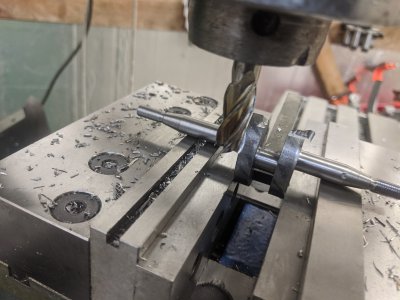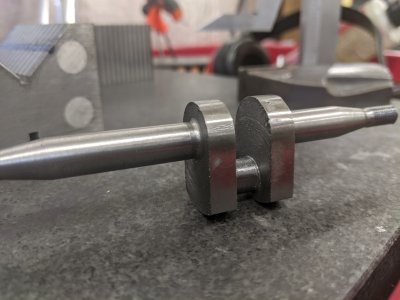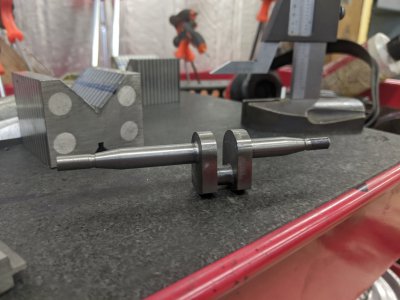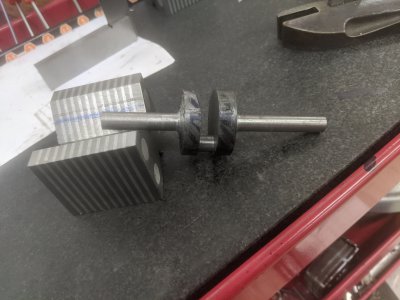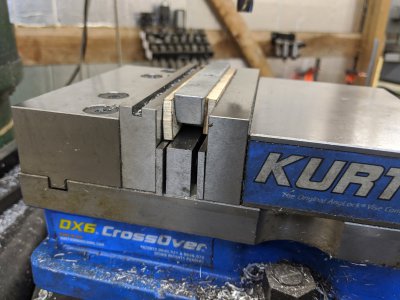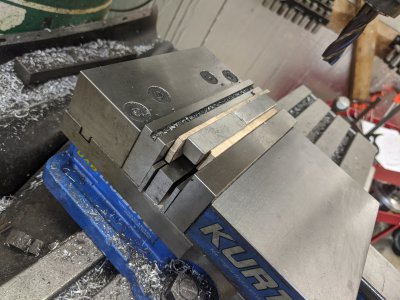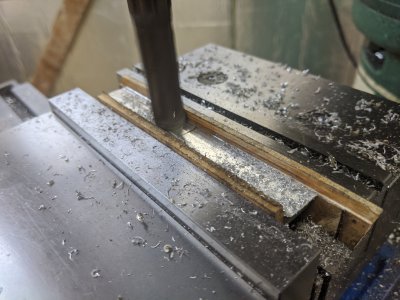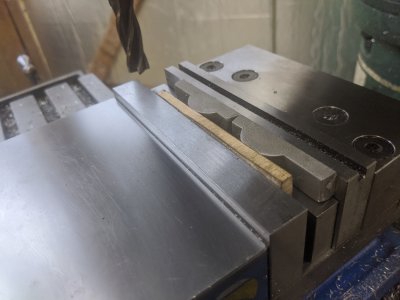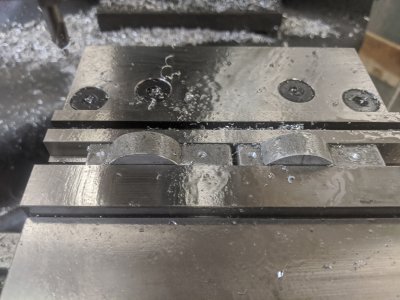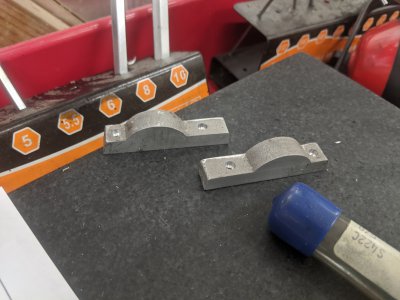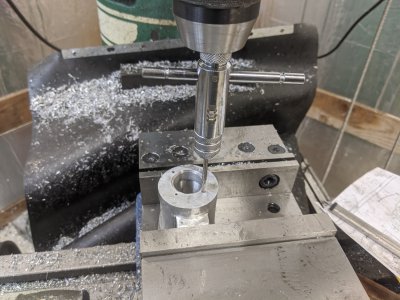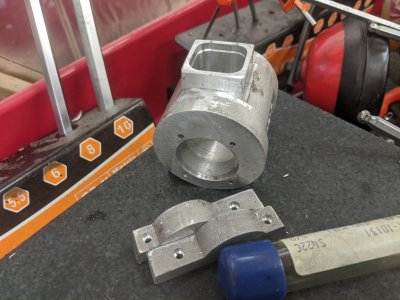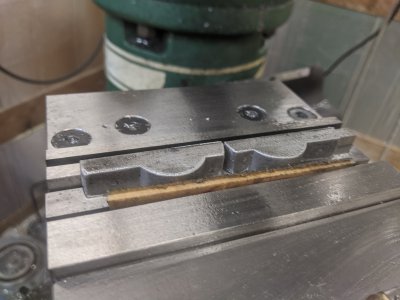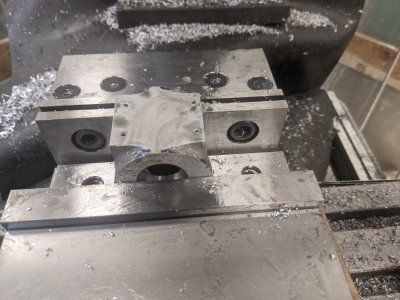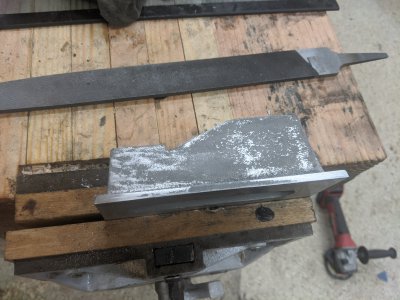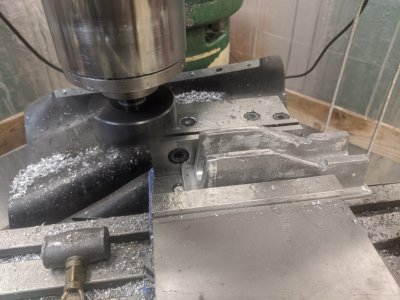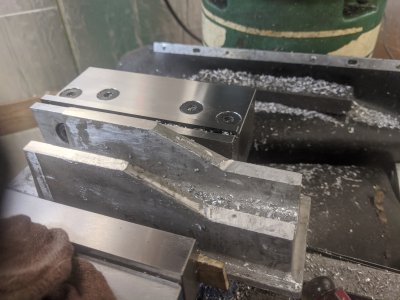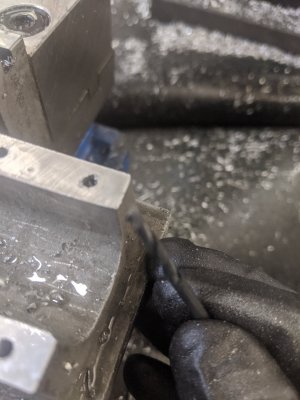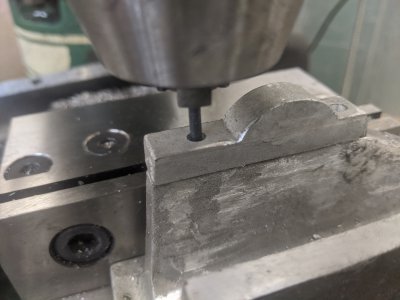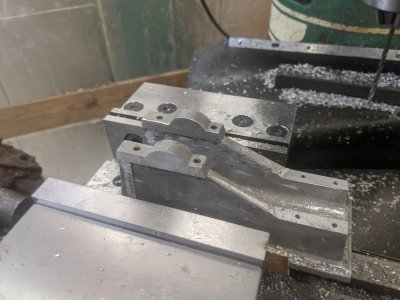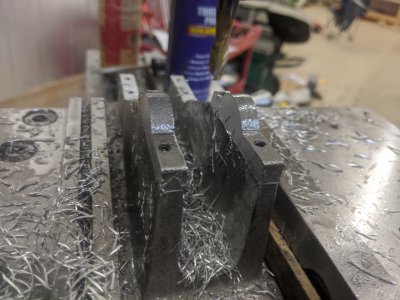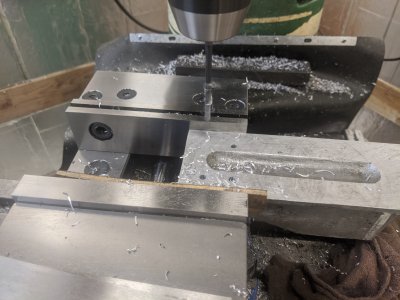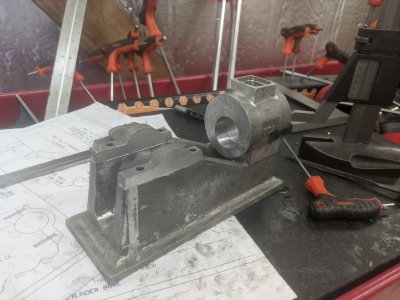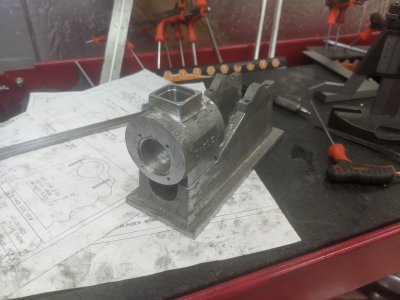The advantage of using the .5 X 1.0 flat stock is you can use a band saw to cut most of the scrap stock away and save you some turning time. My dad made a 4 cylinder opposed engine years ago and I remember him making the crank with the flat stock.
I also am enjoying following your adventure with this project. Keep the photos and commentary coming.
Roger L
That makes a lot of sense! The plans weren't particularly clear, so I assumed it was the 5 piece style. I still love the look of the counter-weight crank, so I might still stick with it, though I'm pretty darn close to giving up. Which brings me to...
Day 5: Learning 1000 ways not to make a lightbulb...
After my failure yesterday, I went to the shop with renewed interest in making it work! I started by cutting the same material in the bandsaw, faced and cut to length, marked the ends and center-pointed, and did some layout. I remembered where I got this bar, I think it is probably A36 hot rolled steel (scrap bin at a welding shop).
I used the 4 jaw to setup the ends, and drilled centers. This time I found my MT4 dead center, which has a pointier tip, so I felt better about the accuracy.
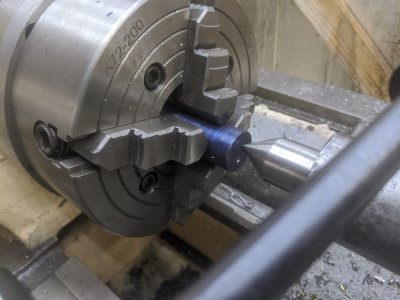
I set it up with the lathe dog, and started trying to cut the center piece first. This was quite an adventure. My cutoff tools REALLY disliked the interrupted cut. I ended up cutting a nearly full-width dovetail shaped cutter to try to get it. It made it through a lot of it (most of it was chewed away by cutoff tools). however, I think I had it slightly below center, and it caught. It ended up bending the stock when I was within 100 tho of being done. Try #2 done:
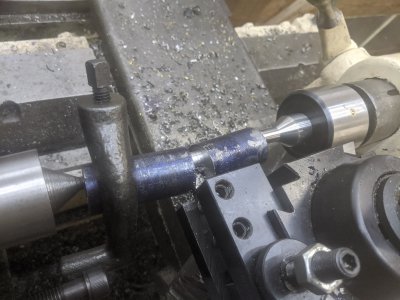
At this point, I remembered I had 2 12" pieces of 12L14, 1.5"! This actually has the advantage that I can use the center of the bar, which makes the setup a little easier. I cut, faced, and center-drilled:
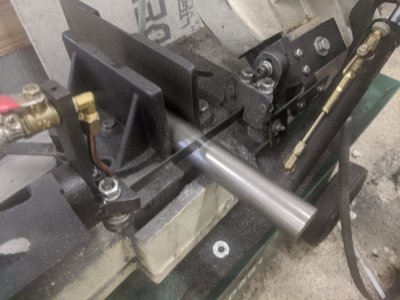
I did my layout with blue. At the point, only the length is right:
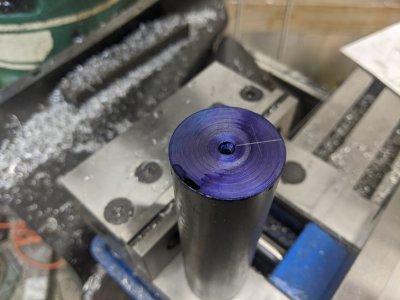

I decided to cut the other centers with the mill and a wiggler. I again felt like this was more accurate than past attempts:
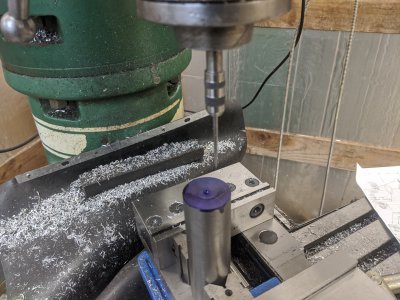
Here is the dovetail tool I cut to try this. It is basically a 350 thou wide cutoff tool

It did REALLY bad with the full-width cut, but I ended up using it a couple of times in the end. It failed, so i quickly switched to a cutoff tool or two:
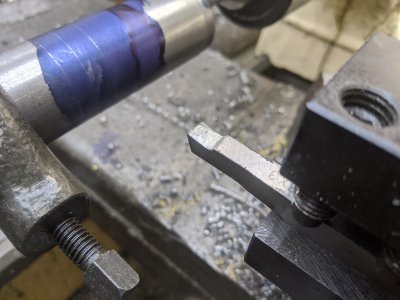
My standard type 'P' cutoff tool REALLY hated the interrupted cut and ended up flexing a bunch and cutting a really wacky/bad hole. However, it managed to remove a lot of the material. This cutoff tool removed quite a good amount of material, however there was one big negative: The right-side of the tool (after the relief) ended up digging into the good material on teh right. Fortunately it is stuff I would be able to take off later. Unfortunately, it wasn't going to matter...
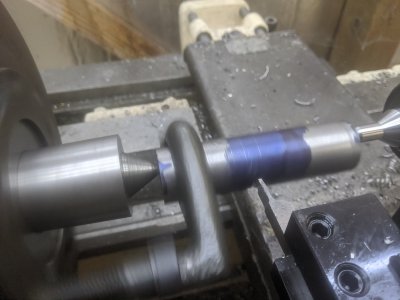
In this image, I've already got to my center diameter and moved to the other centers. You can see the gouge I was talking about earlier, but it is small enough I would be able to turn it off. My dovetail tool maanged to work really well and left a nice finish in the end, but I somehow ended up 10 thou undersized. I figured I have to make a bushing, I'd live with it.
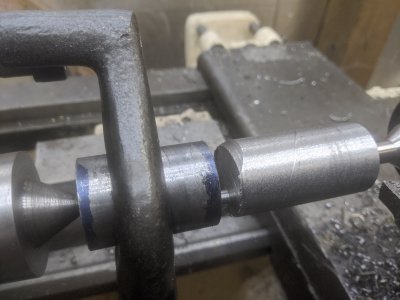
SO, I continued trying to turn down the right side to a smaller size. In retrospect, I should have put some material in the cutout to try to keep it from crushing, but past-me didn't think about it, and doesn't have superglue in the shop. I was healthily and happily taking a 50 thou cut, then seemingly double-dialed in a cut and started taking a heavy cut! It was making it through OK, and the chips looked fine so I let it keep going. Then, this happened:
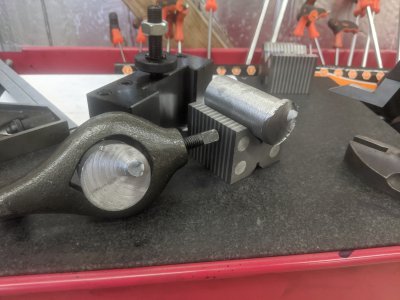
Ugg... Friday over.
I think I learned a bit today, so I am going to just try this again tomorrow. I'll likely do a few things different. First, I'll be more careful turning down the center, I think I'll try to grind a different HSS cutoff tool that is smaller than the ~300 thou (my 50 thou "ring cutter" tool did well, but died today :/) but big and strong enough to take the interrupted cut. That, or I'll try to make a pair of 'knife' tools (a LHS and RHS side) and just go back and forth cutting with those.
After that, I'll consider trying to pop a piece of scrap in the middle to stop my facing from breaking it off again. Alternatively, I might put it back in the 6-jaw at that point, and just cut the majority of it that way.
At least its the weekend tomorrow, so I have some good time to spend



